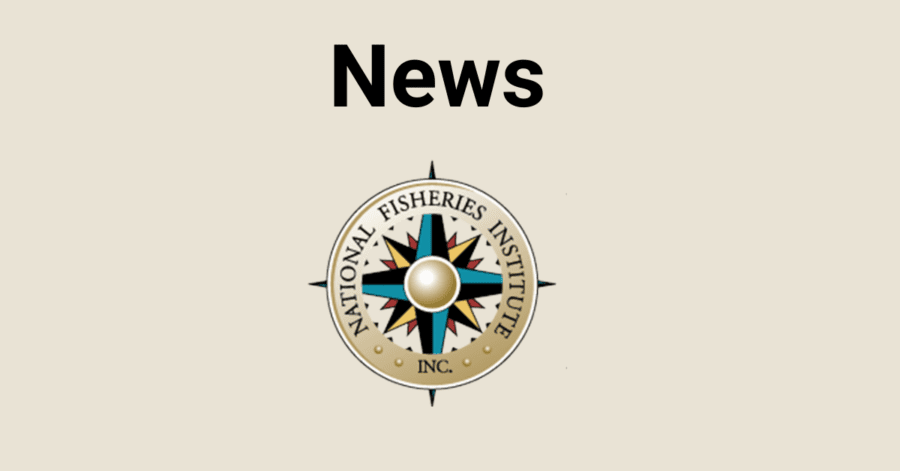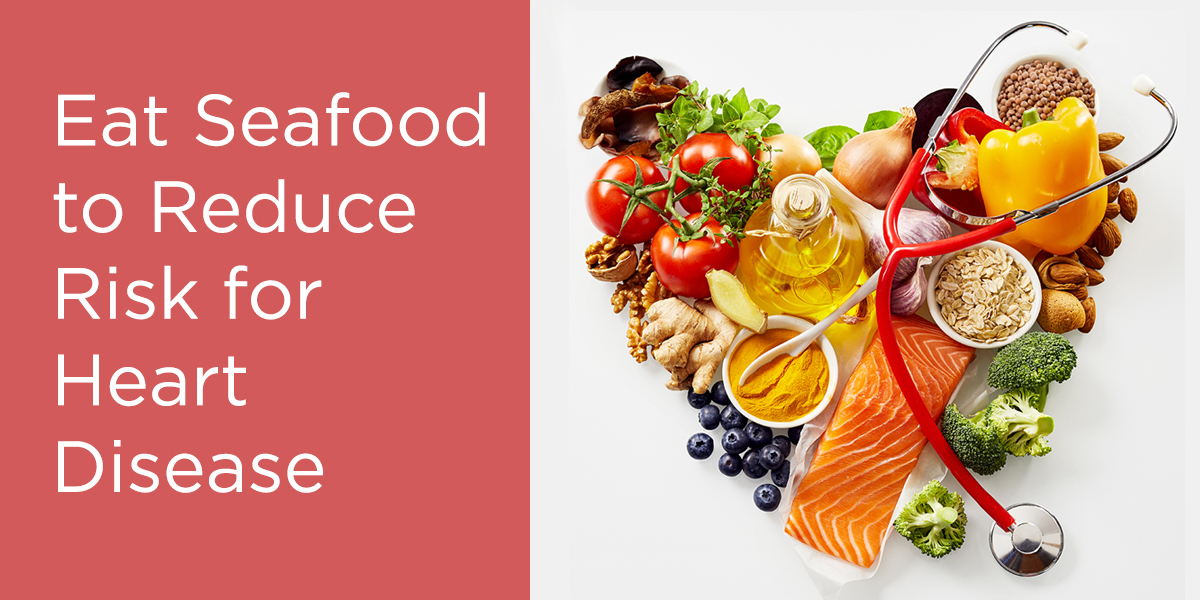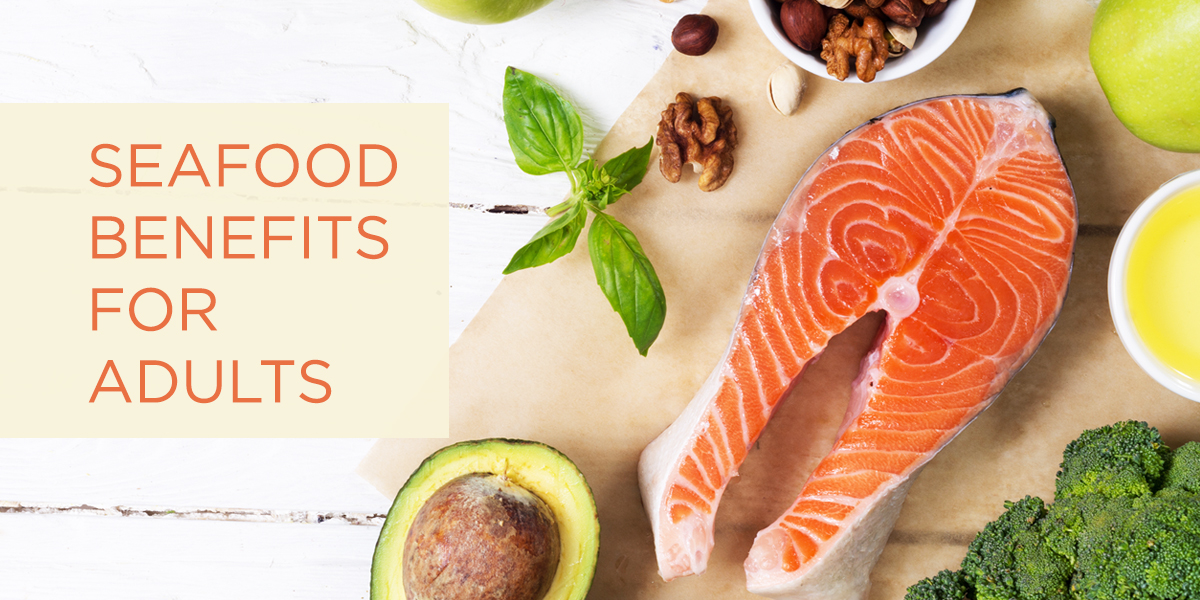All posts by NFI Nutrition
Tilapia Nutrition + 9 Things You Need to Know About Tilapia
Tilapia Nutrition Facts
Is Tilapia Healthy for You? 
Tilapia nutrition is both palpable and palatable. The benefits of eating fish for brain, heart and eye health are well known. Fish provides protein, B vitamins, iron, vitamin D, selenium and healthful omega-3 fatty acids EPA+DHA—all for about 200 calories or less per serving. The latest Dietary Guidelines for Americans recommend eating at least two servings (or 8-12 ounces) of a variety of seafood each week to boost heart and brain health and maintain a healthy weight. Among the top most consumed fish, tilapia is the fourth most consumed seafood in the United States at 1.18 lbs per capita in 2016.
There are many different seafood choices that can effortlessly add up to two servings each week. The top five most popular seafood options in the U.S. are shrimp, salmon, canned tuna, tilapia and pollock. Eating a variety of fish allows your palette to enjoy a variety of different tastes, but also ensures that you derive a variety of health benefits, as well. Your seafood choices can include both oily fish and leaner fish, such as tilapia. While leaner fish contain fewer omega-3s than oily fish, tilapia and catfish (for example) still provide a healthy dose of these heart-healthy omega-3s. In fact, a 3-ounce serving of these fish provides more than 115 mg of EPA+DHA, more than other protein sources like beef, poultry or pork. Tilapia is also low in total and saturated fats and high in protein, an exceptional nutrition combination.
Tilapia nutrition facts (3 oz. serving):
- 110 calories
- 20 g protein
- 115 mg of EPA+DHA
- 2.5 g total fat
- 1 g saturated fat
Tilapia nutrition is not the only benefit when it comes to tilapia fish. For most people, choosing which fish to eat comes down to taste. A mild-tasting fish, tilapia is a great choice for people who are newer to eating seafood. Since it’s a versatile white fish, tilapia pairs perfectly with most kinds of seasonings and sauces and makes a good substitute for chicken in favorite poultry recipes.
Tilapia Nutrition Continued…
While there is some talk about omega-3 fatty acids versus omega-6 fatty acids, even in tilapia, it is important to understand that both of these fatty acids are essential fatty acids. Our bodies do not make either and we need to derive both from our diets. Omega-3s are important for immune function and blood clotting. Omega-6s, on the other hand, tend to promote inflammation, which is in and of itself critical for appropriate healing. Like most nutrients, there is only a problem with omega-6s when they are consumed in excess. In the American diet, there are omega-6s in a lot of different foods, both healthful and unhealthful foods. We should aim to get our omega-6s primarily from whole, nutrient-rich foods like nuts, seeds and tilapia, instead of from processed foods like fast food and packaged snacks like cookies and chips. It’s true that we need to consume a healthful dose of omega-3s in our diet to bring the omega-3 and omega-6 ratio into balance, which is one reason the Dietary Guidelines recommend eating an array of healthful foods—including a variety of seafood 2-3 times each week. A truly versatile fish, tilapia provides loads of other nutrients, including protein and B vitamins.
Debunking The “Bacon” Myth
Tilapia nutrition is simple: tilapia is a healthy and wholesome food. Suggestions that it is nutritionally akin to bacon or doughnuts are misguided and inaccurate. In fact, the history of this misinformation is well documented. In 2008 the Winston Salem Journal reported on a study that supposedly found tilapia wasn’t nutritionally favorable. The study and the reporting on it began to unravel when an international coalition of more than a dozen doctors spoke out to clarify that tilapia fish are low in total and saturated fat, high in protein and clearly part of a healthy diet.
When the original misinformed headlines began popping up, claiming that tilapia was nutritionally akin to bacon, the world-renowned Mayo Clinic even got involved, explaining to consumers that tilapia was not an unhealthy fish at all. In response to the exaggerated reporting on the study Mayo Clinic dietitians wrote, “Does this mean you should give [tilapia] up? No!”
Reputable mainstream news outlets have examined tilapia’s perception challenges, with the bacon hyperbole in mind, and have reported, “its overall fat profile is much better than many animal sources of protein which come with much higher amounts of saturated fat. Tilapia contains only a half gram of saturated fat per 3 ounce serving, compared with 1 gram in chicken breast meat or 8 grams in steak” concluding, “it’s a very nutritious fish.” And recognizing that real independent research reveals, “there’s absolutely no reason to trash tilapia.”
Discrediting PCB Hyperbole
Disreputable websites have also suggested tilapia and other farmed fish have high levels of chemicals called PCBs in them. This is untrue. A Harvard University study finds nine percent of PCBs in the American diet come from consumption of all fish. Twenty percent come from vegetables. No health professional anywhere is suggesting that Americans should eat fewer vegetables in order to avoid PCBs.
Well-informed, independent RDs and MDs from Harvard in Boston to Hanyang in Seoul have been unequivocal; tilapia is healthy and safe.
Tilapia Sustainability
A Brief History
According to researchers, illustrations from Egyptian tombs suggest tilapia were farmed more than 3,000 years ago. In fact, tilapia may have been one of the first fish species ever farmed. Since that time, tilapia farming has seen explosive growth and ranks as the second most cultivated fish on the planet.
Modern-day aquaculture was revolutionized by a growing world population and demand for seafood coupled with the fact that wild fisheries are at their maximum sustainable yield. Since we can’t sustainably take more from our oceans, we have to rely on aquaculture to increase production. In the last few decades, major strides have been made in the aquaculture community resulting in the most efficient and sustainable farmed seafood products available to markets globally. The idea that fish farming is the “wild west” without robust standards and regulations associated with other types of agriculture is wrong, and demonstrates a fundamental lack of understanding of the industry.
The 2015 Dietary Guidelines Advisory Committee (DGAC) looked into sustainability factors of food products and concluded that both wild-caught and farm-raised fish are nutritious, safe and beneficial for optimal health. According to the Washington Post “Tilapia, in short, is an environmentally friendly, lean, low-calorie source of protein. We need all of those we can get.” Currently, about half of all seafood consumed in the U.S. is farmed.
Tilapia Farming

Just like other forms of farming, like land agriculture, aquaculture – specifically tilapia farming – comes in all sizes, from large commercial producers to small backyard ponds. While they all share a few common components, the equipment and methods used are different for each. Tilapia’s hardiness and adaptability to a wide range of culture systems has led to the commercialization of tilapia production in more than 100 countries. According to the director of NOAA Fisheries Aquaculture, it’s hard to find a large volume of U.S. farmed tilapia because the colder climate requires these tropical fish to be grown in expensive indoor tanks. However, countries in places like Asia and Latin America have ideal temperatures and conditions to grow healthy tilapia in an environmentally sound fashion, for an affordable price. The U.S. imports tilapia from countries such as Brazil, China, Colombia, Ecuador, Indonesia, Mexico and more.
Tilapia was one of the first cultivated fish on this planet for a reason. They grow rapidly on formulated feeds with lower protein levels and tolerate higher carbohydrate levels than many carnivorous farmed species (such as salmon). They can also accept feeds with a higher percentage of plant proteins; helping to relieve pressure on fish stocks that contribute to the fishmeal market, the major ingredient in feed for other fish. It’s said that tilapia “don’t ask for much.” They have five basic needs: clean water, oxygen, food, light and room to swim. And, importantly, they grow fast. For more information about tilapia nutrition, tilapia farming and sustainability, check out this comprehensive infographic on tilapia fish.
Tilapia Feed
To get technical, tilapia is an omnivorous grazer that feeds on phytoplankton, periphyton, aquatic plants, small invertebrates, benthic fauna, detritus and bacterial films associated with detritus. According to the Food and Agriculture Organization (FAO), prepared feeds that provide tilapia a complete diet (adequate protein, lipids, carbohydrates, vitamins and minerals) are readily available in developed countries and are also manufactured and available in developing countries with an export market for high quality tilapia products (such as the U.S.).
The ingredients used in tilapia feeds vary depending on the region. The composition and formulation of commercial tilapia feeds is usually proprietary. However, the FAO provides an example of commercial starter feed used for tilapia farmed in Malaysia as an illustration of ingredients and ratios: fishmeal (15 percent), meat meal (5 percent), soybean meal (20 percent), groundnut meal (10 percent), rice bran (10 percent), wheat middlings (15 percent), corn/broken rice/cassava (15 percent), vegetable/fish oil (4 percent), dicalcium phosphate (2 percent), vitamin premix (2 percent) and mineral premix (2 percent).
Making Sense of Tilapia “Poop” Misinformation
The rumor that tilapia are fed pig feces or that they eat their own poop is misguided and perpetuated by clickbait websites hungry for sensational headlines. As detailed in the section above, commercially farmed tilapia are by and large fed pellets that contain their complete diet requirements that differ during each growing stage.
Similar to the “bacon” myth, this rumor started after a 2009 study citied certain challenges regarding a foreign market for fish farming. Among the findings, the study noted that livestock or poultry roamed freely in fields, where farmers used the waste (manure) on fields or in fish feed. It’s important to note the study never mentioned tilapia. According to Fox News, when asked for comment on the study, the authors could not confirm whether it was actually a common practice or an ancillary observation. In fact, Food and Drug Administration (FDA) spokeswoman Theresa Eisenman said the agency was “not aware of evidence to support the claim that this practice is occurring.” To be clear, the study never said this was happening at tilapia farms to begin with, and the authors of the study could not confirm that it was happening at all. However, the soundbites on “feces” and “fish feed” were enough to fuel sensational headlines that irresponsible websites continue to peddle today.
The reality is, U.S. restaurants and retailers that sell imported tilapia have sourcing standards that do not tolerate poor product quality. Conversations about feed, food safety, and traceability are common-place in an era where consumers want to know where their food comes from. Tilapia operations globally realize they have fierce competition and U.S. customers will source elsewhere if they are not confident the fish are receiving high-performance feed or in other aspects of the farming. Seafood companies all along the supply chain – importers, distributors, restaurants and retailers – routinely visit foreign suppliers, plus do third-party audits, to ensure and standards are being met. Additionally, a majority of large retailers and restaurants only source from tilapia farms and processing facilities that are certified, which among many other farming aspects, evaluates feed.
Tilapia Certifications
 The vast majority of tilapia eaten in the U.S. come from farms that adhere to rigorous requirements that take into account food safety, environment and community issues, feed, the use of veterinary drugs, traceability, and more. Certified tilapia farms and processing facilities are inspected routinely to ensure they meet these requirements, and are committed to the health of the fish they raise, the consumers who eat them, and the environment.
The vast majority of tilapia eaten in the U.S. come from farms that adhere to rigorous requirements that take into account food safety, environment and community issues, feed, the use of veterinary drugs, traceability, and more. Certified tilapia farms and processing facilities are inspected routinely to ensure they meet these requirements, and are committed to the health of the fish they raise, the consumers who eat them, and the environment.
The leading third-party certification programs used for tilapia sold in the U.S. include Best Aquaculture Practices (BAP) certification, which is administered by the Global Aquaculture Alliance (GAA), and ASC certification which is managed by the Aquaculture Stewardship Council (ASC). There are currently 98 BAP-certified farms and 74 BAP-certified processing plants worldwide, which produce a mammoth, 230,000 metric tons of tilapia every year. All major retailers in the U.S. including Walmart, Wholefoods, and Target sell certified tilapia.
Tilapia Recipes
For easy and delicious tilapia recipes and ideas, try this Lemon Tilapia Piccata, Tilapia with Mango Salsa and Cajun Tilapia Sandwich.
Eat Seafood to Improve Your Heart Health
Two recent scientific reports, based on a comprehensive review of published science, recommend that the general population increase the amount of seafood they eat to a minimum of two times per week. Seafood is nutrient-rich, meaning it packs healthy nutrients like omega-3s and protein into less than a couple hundred calories per 4-ounce serving.
Seafood Benefits for Adults
- Reduces Risk for Heart Disease
- Helps Maintain Brain Health
Seafood and Heart Disease
How to Protect Your Heart Health
Heart disease is the number one cause of death in men and women in the U.S., with risk factors including diabetes, high blood cholesterol and being overweight. The good news is that you have the power to help manage these risk factors and lower your risk for heart disease by eating at least two servings of seafood a week. Low consumption of the omega-3 fatty acids found in fish is the second-biggest dietary contributor to preventable deaths in the United States, taking a total of 84,000 lives each year.i In fact, eating seafood just twice a week can reduce the risk of fatal heart attack by 36 percent!ii By eating seafood, you get the essential nutrients that can help protect you against heart attacks, decrease blood triglyceride levels and increase HDL (good) cholesterol.

Did You Know?
Women are particularly at risk for heart disease, with more women dying of heart disease than men each year. In fact, more than 200,000 women die from heart attacks every year—five times the number of women who die from breast cancer.iii
Healthy Suggestions
Besides providing healthy omega-3s, another important nutrient provided by seafood is protein. However, all protein sources aren’t alike. Many high protein foods also happen to have a lot of unhealthy saturated fat and cholesterol. So when choosing which foods to eat, consider a low-calorie option such as tuna. One serving of protein-rich canned or pouch tuna is lower in total fat, saturated fat and cholesterol than an equal serving of beef, pork, chicken or lamb.
iDanaei, Goodarz, et al. “The Preventable Causes of Death in the united states: Comparative risk Assessment of Dietary, Lifestyle, and metabolic risk factors.” Plos medicine 6 (2009).
ii Horn, L. V., PhD, RD., McCoin, M., MPH, RD., Kris-Etherton, P. M., PhD, RD., Burke, F., MS, RD.,Carson, J. A. S., PhD, RD., Champagne, C. M., PhD, RD., Sikand, G., MA, RD. (2008, February). The Evidence for Dietary Prevention and Treatment of Cardiovascular Disease. Journal of the American Dietetic Association, 108(2).
iiiLloyd-Jones D, Adams R, Brown T,. et al. Heart Disease and Stroke Statistics 2010 Update: A Report from the American Heart Association Statistics Committee and Stroke Statistics Subcomittee. Circulation. 2010; 121:e1-e170
Seafood During Pregnancy
How much seafood should you eat during pregnancy?
Eat at least 2-3 servings of seafood per week to boost babies’ brain development.
Choosing the right foods during pregnancy can make a big difference in your baby’s health and growth. Eating seafood while pregnant is an essential part of a healthy diet for you and your unborn child or breastfed baby. The recent Dietary Guidelines for Americans recommend pregnant and breastfeeding women eat at least 2 to 3 servings of seafood per week to improve babies’ eye and brain development.
Seafood is one of the only foods bursting with a type of healthy fat called omega-3 DHA. America’s favorite types of seafood all meet the FDA’s strict safety guidelines.
To get the recommended amounts and the health benefits, eat a variety of seafood. Visit Eating Seafood While Pregnant – our online guide that includes the top fish to eat and fish to avoid while pregnant.
Pregnancy Diet: Eating Seafood for Two
You only need about 300 extra calories a day during your pregnancy. So when you get a craving, satisfy it with a nutrient-rich food. The Mediterranean Diet is full of sweet foods like fruit, creamy foods like yogurt, and savory foods like fish to help satisfy your cravings during pregnancy.
Eating Mediterranean Style

Your pregnancy weight is important—too little weight gain can keep your baby from getting all the nutrients he or she needs to grow; too much weight gain may increase your chance of getting gestational diabetes (diabetes that starts during pregnancy). But rather than obsess over the scale just remember to eat simply, drink lots of water and stay active.
What About Eating Fish During Pregnancy?
Eating fish while pregnant is healthy and essential to your pregnancy diet. The amount of fish experts recommend pregnant women eat is at least 12 ounces = About 2–3 servings a week.
There are only four fish to avoid during pregnancy and breastfeeding; shark, swordfish, king mackerel and tilefish. Most women in the U.S. already do not eat these types of seafood. If you are not pregnant or breastfeeding, there are no types of commercial seafood to avoid.
Learn more about eating fish and pregnancy: what to eat and what not to eat.
Seafood and Pregnancy Resources:
- Learn the do’s and don’ts of Eating Seafood While Pregnant

- Download our free 15-page “The Pregnant Woman’s Guide to Eating Seafood” on your computer, phone, or print it out for easy reference for tasty seafood/fish recipes.
- Save the Seafood Tips Bookmark
Benefits of Eating Fish
Nutritional Benefits of Eating Fish
Fish provides a variety of health benefits through providing vital nutrients like Omega-3s, which the body does not create on its own, and serving as an ideal source of lean protein, high in protein and low in calories and saturated fat.
The good news is that there are quick and easy ways, like canned or pouched tuna, to get more seafood in your diet. Explore the nutritional benefits below and get great seafood recipes here.
Omega-3s
What are they?
Omega-3s in seafood are a powerful nutrient—they help protect the heart, brain and eyes in babies and adults. The most powerful omega-3s available are found in seafood. Just 2-3 servings a week is all you need.
Omega-3s are a healthy type of fat. There are two main categories of omega-3s:
- Seafood contains mostly eicosapentaenoic (EPA) and docosahexaenoic acid (DHA). These are called long-chain omega-3s and have powerful heart and brain benefits.
- Plants and nuts contain mostly alpha-linolenic acid (ALA) omega-3s. These are also called short-chain omega-3s. While ALA omega-3s are healthful, they are not offer the same powerful heart and brain benefits as EPA and DHA.
Your body cannot make omega-3s on its own and it doesn’t do a good job turning ALA into EPA and DHA. In fact, a deficiency in omega-3s can be harmful. Research shows that a diet low in omega-3s contributes to 84,000 preventable deaths per year.i So it is important to eat seafood, to get plenty EPA and DHA omega-3s.
What are the health benefits?
Studies have shown that omega-3s, which are found in abundance in fish like tuna, help to keep brains and hearts healthy throughout a person’s life – and are even important before you’re born!
Help little ones’ brain and eyes develop, especially during the third trimester. During pregnancy, all of the DHA gathered by the growing baby must come from the mother’s diet.
Boost your mood. Plenty of DHA can help prevent or manage depression during and after pregnancy ii
Help your heart stay strong. DHA and EPA boost heart health by decreasing blood triglyceride levels, slowing the buildup of plaques that contribute to the “hardening of the arteries,” lowering blood pressure slightly and reducing the risk of abnormal heart rhythms that can lead to sudden death. iii
Stay strong and healthy. Omega-3s can be beneficial for your heart, brain and joints.
Protein and Calories
What are Protein and Calories?
Protein is an important part of every cell in the human body and makes up a large part of your skin, hair, nails, muscles, organs and glands. It builds, maintains and replaces the tissues in your body. Enzymes, hormones and blood all contain protein too.
According to the United States Department of Agriculture (USDA), calories are a tool for measuring the amount of energy a food or beverage contains, which fuels your body. iv
Why do We Need Them?
In fewer than 200 calories, seafood, such as tuna in water, packs a protein punch with about 20 grams per serving.
Your body needs protein from food to repair cells and make new ones. It’s a necessary part of your diet in all stages of your life, but especially during those when you tend to grow a lot – like childhood and adolescence. You may also need a little extra protein during injury and sickness. Women require more protein during pregnancy. Besides seafood, other common protein-rich foods include meat, beans and dairy.
Whether at work, play or even when you’re resting, your body also needs energy from calories. However, consuming too many calories can cause you to gain weight, so it’s important to choose foods that provide enough nutrients without too many calories.
The amount of protein and calories you need depends on your age and health.
Women who are at a healthy weight before getting pregnant should expect to gain 25 to 35 pounds as they carry their baby. Eating nutrient-rich foods that are low in calories, like seafood, can help mom and baby get essential protein and contribute to healthy weight gain.
Protein helps the body repair and make new cells. This is especially important during childhood and adolescence, when a child is growing a lot. Seafood is a low-calorie, high-protein food that can help meet a growing child’s needs.
Generally, most adults need 2 to 3 servings of protein rich food each day to meet their needs. One serving is about 3 to 4 ounces of seafood, meat or poultry.
Protein can help maintain strong bones and organ health. As we age, it is important to eat a diet rich in low-calorie, high-protein foods such as seafood.
i Danaei, G., Mozaffarian, D., Taylor, B., Rehm, J., et al. (2009). The Preventable Causes of Death in the United States: Comparative Risk Assessment of Dietary, Lifestyle, and Metabolic Risk Factors. PLoS Med 6(4).
ii Harrison, L. (2001, November 1). Psychology Today. Eating fish during pregnancy and lactation may benefit mother and child. Available at: http://www.psychologytoday.com/articles/200111/eating-fish-during-pregnancy-and-lactation-may-benefit-mother-and-child. Accessed March 5, 2012.
iii Horn, L. V., PhD, RD., McCoin, M., MPH, RD., Kris-Etherton, P. M., PhD, RD., Burke, F., MS, RD.,Carson, J. A. S., PhD, RD., Champagne, C. M., PhD, RD., Sikand, G., MA, RD. (2008, February). The Evidence for Dietary Prevention and Treatment of Cardiovascular Disease. Journal of the American Dietetic Association, 108(2).
iv United States Department of Agriculture. Weight Management & Calories. Available at: http://www.choosemyplate.gov/weight-management-calories/calories.html. Accessed February 22, 2012.
Benefits of Eating Fish and Seafood Based on Age
How Does Seafood Benefit You?
Seafood Nutritional Benefits
Eating seafood 2 to 3 times per week has scientifically-proven health benefits
The latest Dietary Guidelines for Americans recommend that everyone, including pregnant and breastfeeding women, should increase the amount of seafood they eat to 2 to 3 servings each week for heart and brain health benefits. At a time when people are told to limit many foods, seafood is among the handful of “winning” foods that Americans are encouraged to eat more of for their health.
But, Americans aren’t eating enough seafood!
It is estimated that the average American eats about one serving of seafood a week – that means most people need to (at least) double the amount of fish and shellfish they eat to meet the recommended 2 to 3 servings. Additionally, consumer survey data shows 91 percent of parents with children 12 years and younger say their children aren’t eating seafood twice a week.i
Evidence suggests the average consumer may not perceive themselves at-risk for health conditions stemming from an omega-3 deficiency and, therefore, are not making necessary changes to their diet. In addition, many Americans are misinformed about the safety of eating various types of fish and express a lack confidence in selecting or preparing seafood.ii
Nutritional Benefits
Omega-3s
What are they?
Omega-3s in seafood are a powerful nutrient—they help protect the heart, brain and eyes in babies and adults. The most powerful omega-3s available are found in seafood. Just 2-3 servings a week is all you need.
Omega-3s are a healthy type of fat. There are two main categories of omega-3s:
- Seafood contains mostly eicosapentaenoic (EPA) and docosahexaenoic acid (DHA). These are called long-chain omega-3s and have powerful heart and brain benefits.
- Plants and nuts contain mostly alpha-linolenic acid (ALA) omega-3s. These are also called short-chain omega-3s. While ALA omega-3s are healthful, they are not offer the same powerful heart and brain benefits as EPA and DHA.
Your body cannot make omega-3s on its own and it doesn’t do a good job turning ALA into EPA and DHA. In fact, a deficiency in omega-3s can be harmful. Research shows that a diet low in omega-3s contributes to 84,000 preventable deaths per year.i So it is important to eat seafood, to get plenty EPA and DHA omega-3s.
What are the health benefits?
Studies have shown that omega-3s, which are found in abundance in fish like tuna, help to keep brains and hearts healthy throughout a person’s life – and are even important before you’re born!
Help little ones’ brain and eyes develop, especially during the third trimester. During pregnancy, all of the DHA gathered by the growing baby must come from the mother’s diet.
Boost your mood. Plenty of DHA can help prevent or manage depression during and after pregnancy ii
Help your heart stay strong. DHA and EPA boost heart health by decreasing blood triglyceride levels, slowing the buildup of plaques that contribute to the “hardening of the arteries,” lowering blood pressure slightly and reducing the risk of abnormal heart rhythms that can lead to sudden death. iii
Protein and Calories
What are Protein and Calories?
Protein is an important part of every cell in the human body and makes up a large part of your skin, hair, nails, muscles, organs and glands. It builds, maintains and replaces the tissues in your body. Enzymes, hormones and blood all contain protein too.
According to the United States Department of Agriculture (USDA), calories are a tool for measuring the amount of energy a food or beverage contains, which fuels your body. iv
Why do We Need Them?
In fewer than 200 calories, seafood, such as tuna in water, packs a protein punch with about 20 grams per serving.
Your body needs protein from food to repair cells and make new ones. It’s a necessary part of your diet in all stages of your life, but especially during those when you tend to grow a lot – like childhood and adolescence. You may also need a little extra protein during injury and sickness. Women require more protein during pregnancy. Besides seafood, other common protein-rich foods include meat, beans and dairy.
Whether at work, play or even when you’re resting, your body also needs energy from calories. However, consuming too many calories can cause you to gain weight, so it’s important to choose foods that provide enough nutrients without too many calories.
The amount of protein and calories you need depends on your age and health.
Women who are at a healthy weight before getting pregnant should expect to gain 25 to 35 pounds as they carry their baby. Eating nutrient-rich foods that are low in calories, like seafood, can help mom and baby get essential protein and contribute to healthy weight gain.
Protein helps the body repair and make new cells. This is especially important during childhood and adolescence, when a child is growing a lot. Seafood is a low-calorie, high-protein food that can help meet a growing child’s needs.
Generally, most adults need 2 to 3 servings of protein rich food each day to meet their needs. One serving is about 3 to 4 ounces of seafood, meat or poultry.
i Danaei, G., Mozaffarian, D., Taylor, B., Rehm, J., et al. (2009). The Preventable Causes of Death in the United States: Comparative Risk Assessment of Dietary, Lifestyle, and Metabolic Risk Factors. PLoS Med 6(4).
ii Harrison, L. (2001, November 1). Psychology Today. Eating fish during pregnancy and lactation may benefit mother and child. Available at: http://www.psychologytoday.com/articles/200111/eating-fish-during-pregnancy-and-lactation-may-benefit-mother-and-child. Accessed March 5, 2012.
iii Horn, L. V., PhD, RD., McCoin, M., MPH, RD., Kris-Etherton, P. M., PhD, RD., Burke, F., MS, RD.,Carson, J. A. S., PhD, RD., Champagne, C. M., PhD, RD., Sikand, G., MA, RD. (2008, February). The Evidence for Dietary Prevention and Treatment of Cardiovascular Disease. Journal of the American Dietetic Association, 108(2).
iv United States Department of Agriculture. Weight Management & Calories. Available at: http://www.choosemyplate.gov/weight-management-calories/calories.html. Accessed February 22, 2012.
Seafood Benefits for Older Adults
What Can Seafood Do For You?
Staying healthy as you age is important. There are nutrients you need in order to keep yourself in the best possible health. Eating protective foods that contain beneficial omega-3s, like seafood, can help you from head to toe.
Seafood Benefits for Boomers+
- Improves Heart Health
- Protects Eyesight
- Maintains Bone and Joint Health
Improve Your Heart Health
Heart disease is the number one cause of death in men and women in the U.S., with risk factors including age (starting at 55), diabetes, high blood cholesterol and being overweight. While you can’t control your age, the good news is that you do have the power to help manage some of the other risk factors. Studies show you can help control dietary risk factors and protect your heart by eating more fish, which is rich in omega-3 fatty acids. Deficiencies in omega-3s are known to increase the risk of heart disease such as heart attack or stroke. Start taking control of your heart health at your next meal – it can be as easy as adding a can of tuna to your salad!
Fight Alzheimer’s Disease
The nutrients found in seafood are important to your brain health. Studies have suggested that seafood nutrients, such as omega-3s, may reduce the risk of Alzheimer’s disease and cognitive decline.ii The Alzheimer’s Association recommends that people should eat more fish high in omega-3s, such as tuna.
Protect Your Sight
Seafood may also help reduce the risk of chronic eye conditions, including macular degeneration. The American Optometric Associations says that eating omega-3s from sources like tuna or salmon is “linked to healthy eyes and may reduce risk of some chronic eye conditions.”iii
Maintain Your Joint Health
Nutrients found in seafood may help to relieve symptoms such as inflammation caused by rheumatoid arthritis. The Arthritis Association reports, “adding about two 3-ounce servings of seafood to your menu each week is a good way to increase your levels of omega-3s and help decrease the body’s inflammatory reaction.”iv
Keep Your Bones Strong
Eating the recommended amount of seafood may help protect against bone loss. One study suggests that the combination of nutrients found in seafood – particularly the omega-3s, DHA and EPA – can help you maintain your bone density.v This is particularly important for those concerned about osteoporosis. So take control of your heart health – it’s as easy as eating 2 or 3 seafood meals each week!
Did You Know?
Women are particularly at risk for heart disease, with more women dying of heart disease than men each year. In fact, more than 200,000 women die from heart attacks every year—five times the number of women who die from breast cancer.iii
Healthy Suggestions
Did you know that taking a fish oil supplement is not the same as eating fish? While supplements provide omega-3s, they do not provide the other healthy nutrients found in fish. To get the most health benefits, eat seafood, such as canned or pouch tuna, at least 2 times per week.
Find easy recipes here.
iLloyd-Jones D, Adams R, Brown T,. et al. Heart Disease and Stroke Statistics 2010 Update: A Report from the American Heart Association Statistics Committee and Stroke Statistics Subcomittee. Circulation. 2010; 121:e1-e170
ii Alzheimer’s Association. Adopt a Brain-Healthy Diet. Available at: http://www.alz.org/we_can_help_adopt_a_brain_healthy_diet.asp. Accessed March 5, 2012.
iii American Optometric Association. Nutrients for Eye Health. Available at: http://www.aoa.org/documents/Nutrients-for-Eye-Health-Patient-Handout.pdf. Accessed March 5, 2012.
iv Arthritis Today. Fish May Reduce Inflammation. Available at: http://www.arthritistoday.org/nutrition-and-weight-loss/healthy-eating/food-and-inflammation/fish-inflammation.php. Accessed March 5, 2012.
v Am J Clin Nutr. 2011 May;93(5):1142-51. Epub 2011 Mar 2. Protective effects of fish intake and interactive effects of long-chain polyunsaturated fatty acid intakes on hip bone mineral density in older adults: the Framingham Osteoporosis Study.
Seafood Benefits for Children
Seafood Sets Kids Up for a Lifetime of Health
Seafood is a great source of protein, which helps the body repair and make new cells. This is especially important during childhood and adolescence, when a child is growing a lot. Protein also helps a child’s body produce antibodies that help battle infections. Children would be much more susceptible to serious diseases without essential amino acids (the building blocks of protein).i
Seafood Benefits for Children
- Promotes Healthy Eating Habits
- Provides Essential Nutrients for Growth
When Do I Start Feeding My Child Fish?
Pediatricians recommend introducing solid foods, including seafood, into a child’s diet around 4-6 months. While some may suggest certain parents wait until after the first year of life to give fish, eggs, peanuts and other common allergens to a child, the American Academy of Pediatrics (AAP) states that there is no need to delay the introduction of these foods past 4-6 months. The AAP suggests giving your baby one new food at a time, and waiting a few days to watch for any allergic reactions before introducing another.ii
Only 10% of Children in the U.S. Eat Enough Seafood
The World Health Organization states that healthy eating habits, including fish early on, help create good habits later in life. The Dietary Guidelines say children should eat two servings of seafood each week in age-appropriate portions to match their calorie needs.
To get your kids to go fish, try these easy tips:
- Make-over Mom and Dad’s Mealtime Mind-set
- Teach your kids to look forward to eating, to anticipate with pleasure the meal to come. Tell them how much they are going to love their food, as opposed to asking questions like “do you like that?”
- Make one Meal
- For lunches and dinners, make one tasty meal for everyone to eat. This saves time and money while ensuring kids get the same flavorful, wholesome meal as adults.
- Entice Tots’ Taste Buds
- Use new spices and ingredients to help develop your child’s palate. Working new flavors in to a familiar food – like capers in to canned tuna – is a good way to introduce an exciting taste.
Get tasty, quick seafood recipes the whole family will love here.
Healthy Suggestions
Think beyond lunch and dinner to meet the goal of seafood twice a week. Whip up a bowl of tuna salad as a dip with whole-grain crackers for an afterschool snack, for example.
i American Academy of Pediatrics. Making Healthy Food Choices. Available at: http://www.healthychildren.org/English/ages-stages/gradeschool/nutrition/pages/Making-Healthy-Food-Choices.aspx. Accessed February 24, 2012.
ii American Academy of Pediatrics. Switching To Solid Foods. Available at: http://www.healthychildren.org/English/ages-stages/baby/feeding-nutrition/Pages/Switching-To-Solid-Foods.aspx. Accessed February 24, 2012.
Seafood Benefits for Adults
Eat Seafood to Improve Your Health
Brain Health
Fight Depression and Accelerated Brain Aging
The omega-3s found in seafood are a key component of a brain-healthy diet. Studies have shown that people who don’t have enough omega-3s are more likely to develop depression. And, for those who have depression, studies have shown that the omega-3s, which are found in seafood, can improve the symptoms.iv
Additionally, researchers recently looked at late middle aged adults without dementia to see how the levels of omega-3s in their blood are related to signs of future dementia. Adults with the lowest amount of the fish-based omega-3, DHA, in their blood had smaller brain volumes and poorer performance in tests of visual memory; abstract thinking; and planning, organization, and carrying out of tasks than adults with higher DHA levels. The smaller brain volume from low omega-3 levels speeds up brain aging by about two years. So take control of your heart health – it’s as easy as eating 2 or 3 seafood meals each week!
Heart Health
Eating seafood also improves heart health and reduces risk for heart disease. Learn more about seafood and heart health.
Seafood During Pregnancy Benefits
Healthy Choices for Mom & Baby
Eat At Least 2 Servings of Seafood per Week to Boost Babies’ Brain Development
Choosing the right foods during pregnancy can make a big difference in your baby’s health and growth. Seafood is an essential part of a healthy diet for you and your unborn child or breastfed baby. The recent Dietary Guidelines for Americans recommend pregnant and breastfeeding women eat 2 to 3 servings of seafood per week to improve babies’ eye and brain development. It is so important that the Dietary Guidelines for Americans suggest pregnant and breastfeeding women should eat no less than 8 ounces (2 servings) of seafood each week.
To get the recommended amounts and the health benefits, eat a variety of seafood, which can include all types of tuna – white (albacore) and light canned tuna. Pregnant women can eat up to 6 ounces of white (albacore) tuna per week.
There are only four fish to avoid during pregnancy and breastfeeding; shark, swordfish, king mackerel and tilefish. Most women in the U.S. already do not eat these types of seafood. If you are not pregnant or breastfeeding, there are no types of commercial seafood to avoid.
Healthy Suggestions
Besides providing healthy omega-3s, another important nutrient provided by seafood is protein. However, all protein sources aren’t alike. Many high protein foods also happen to have a lot of unhealthy saturated fat and cholesterol. So when choosing which foods to eat, consider a low-calorie option such as tuna. One serving of protein-rich canned or pouch tuna is lower in total fat, saturated fat and cholesterol than an equal serving of beef, pork, chicken or lamb.
iDanaei, Goodarz, et al. “The Preventable Causes of Death in the united states: Comparative risk Assessment of Dietary, Lifestyle, and metabolic risk factors.” Plos medicine 6 (2009).
ii Horn, L. V., PhD, RD., McCoin, M., MPH, RD., Kris-Etherton, P. M., PhD, RD., Burke, F., MS, RD.,Carson, J. A. S., PhD, RD., Champagne, C. M., PhD, RD., Sikand, G., MA, RD. (2008, February). The Evidence for Dietary Prevention and Treatment of Cardiovascular Disease. Journal of the American Dietetic Association, 108(2).
iiiLloyd-Jones D, Adams R, Brown T,. et al. Heart Disease and Stroke Statistics 2010 Update: A Report from the American Heart Association Statistics Committee and Stroke Statistics Subcomittee. Circulation. 2010; 121:e1-e170
iv PubMed. The efficacy of omega-3 supplementation for major depression: a randomized controlled trial. Available at: http://www.ncbi.nlm.nih.gov/pubmed/20584525. Accessed March 6, 2012.
Healthy Fish Make Waves On NBC
NBC News is taking aim at nutrition misinformation and Rima Kleiner from the Dish on Fish serves as the expert resource who helps the site separate fact from fiction. The answer? Healthy fish.
Healthy Fish Is Part of the Wholesome Answer
In “5 Myths About Quitting Sugar, Debunked,” Rima notes, “the easiest way to keep added sugar intake low is to choose minimally processed whole foods, like vegetables, fruit, whole grains, seafood, beans, nuts and seeds.” As part of the “Better – Diet & Fitness” tab, NBC helps readers navigate food fables and not surprisingly healthy fish is part of the wholesome answer when it comes to avoiding too much sugar.
Dietary Guidelines Help Provide a Roadmap
Rima helps readers navigate sugar issues with help from the 2015 Dietary Guidelines for Americans, that notes less than 10 percent of total daily calories should come from added sugars.
Subtract Sugar by adding Seafood
Rima suggests people stop focusing on things they think they need to remove from their diet and focus, instead, on things they can add to their diet: “The easiest way to keep added sugar intake low is to choose minimally processed whole foods, like vegetables, fruit, whole grains, seafood, beans, nuts and seeds,” says Kleiner. “If a client wants to go ‘no-sugar,’ I typically recommend that they focus on eating a diet rich in whole, unprocessed foods and low in packaged or convenience foods. It may sound cliché, but think about it: A diet rich in whole, unprocessed foods is inherently going to be full of nutrient-dense foods, like vegetables, fruits, whole and ancient grains, seafood, beans, eggs, nuts and seeds. Simply put, I recommend following a Mediterranean-style diet if you want to avoid foods with added sugars.”
Confusing messaging illustrates that nutrition questions abound. But more often than not the simple answer is healthy fish.
USDA: Americans Need to Eat More Seafood
This week, the USDA Economic Research Service published an article about seafood that tells an all too familiar tale, “Americans’ Seafood Consumption Below Recommendations.”
The article highlights seafood as a nutrient-dense source of protein, low in calories and saturated fat, and rich in key vitamins and nutrients including omega-3 fatty acids, EPA and DHA.
The USDA’s 2015-2020 Dietary Guidelines for Americans recommend that Americans eat a variety of protein food, including at least 2 servings of seafood per week, as part of a healthy eating pattern. Consumption data shows that most Americans are eating enough protein in general, but they’re not eating enough seafood.
The chart below illustrates that just 5% of the protein foods Americans ate in 2014 consisted of seafood, while the recommendation is 20%:
 At a time when Americans are told to limit so many foods, seafood is among the handful of foods Americans are encouraged to eat more often, and the information in this article helps illustrate why. Plus, adding seafood into a meal plan just twice each week is not a difficult feat. Visit DishOnFish.com for recipe ideas and preparation tips. It’s time Americans #ShiftToFish.
At a time when Americans are told to limit so many foods, seafood is among the handful of foods Americans are encouraged to eat more often, and the information in this article helps illustrate why. Plus, adding seafood into a meal plan just twice each week is not a difficult feat. Visit DishOnFish.com for recipe ideas and preparation tips. It’s time Americans #ShiftToFish.


















